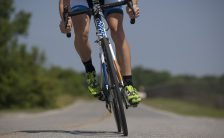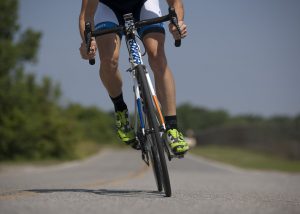
 Every pro cycle rider knows that timing is everything when it comes down to how to prepare for road cycling events.
Every pro cycle rider knows that timing is everything when it comes down to how to prepare for road cycling events.
They count their hours spent in the saddle and measure their average speed during those tough training hours.
They measure time expended in each heart rate section and record how long it takes to recover.
It’s a cyclists job to ensure that their time is used as efficiently as possible.
Cycling events are a great place to meet other cycling enthusiasts and put your skills to the test. Showing up unprepared, however, can result in total disaster. Stick to your training regimen so you’re fit for race day.
Even if you work a full-time job, you can still prepare productively for road cycling events, as many cyclists begin to realize that they’re more productive at work on the days they cycle.
Here are some techniques to make space in your life for cycling, especially if training for a cycling event.
How To Effectively Prepare For Road Cycling Events
Schedule It On Your Calendar
Each week, schedule three rides onto your calendar, whether you’re going with your other half, your kids, a group or alone. Let everyone in your life know that these times are important to you and you need to stick to them.
Use The Pal System
Have a cycling buddy, preferably another rider in the same road cycling event. If you organize to meet someone for a ride means, you’ll be less sure to blow it off when things get busy. Riding with a chum makes the miles pass quicker, too.
When riding with friends practice riding by staying behind the back wheel of the bicycle in front of you. Don’t bring your front wheel alongside unless you are planning to pass.
During the race, try to stay in the front third of the group, but behind another rider. This provides the greatest aerodynamic benefit.
Set Goals And Stick To Them
Set your cycling-related goals and tell others about your target. Whether you’re entering a race or simply looking to lose a couple of pounds, the simple fact that you are committing will help you to make your cycling a priority.
Start Training Early And Gradually Build Up
You will need to start to train for a road cycling event at least two months before the time. Three or four months is even better.
Base training involves steady, moderate cycling to train your endurance levels. You should be able to talk while cycling, and your heartbeat should reach about 60–70% of its maximum rate.
Base train four or five days a week so your body learns to burn fat efficiently, saving carbohydrate fuel for more intense exercise. Aim for at least two hours per session, but feel free to ride as long as you can without getting tired.
Gradually increase the length of your session until you are cycling for the same duration that you will at the event.
Once you’ve adjusted to cycling for long periods without getting too tired, add short tempo training sessions two or three times a week. At this pace, you should breathe fast but not feel any burning or be aching in your muscles.
Start with 15 minutes sessions or shorter in the middle of your base training, and gradually increase the duration. After a few weeks, you may be able to tempo train for 40-minute sessions at a time.
Use the lactate threshold training method.
Your lactate threshold is the highest level of activity you can keep up for 60 minutes at a time while keeping your lactic acid levels steady. The higher you can push this threshold, the faster you’ll be during road cycling events.
Try to start adding this intense training six to eight weeks before the race.
Here is a good example of a training schedule to follow when you cycle:
- Find a flat, outdoor route without stops, or use an indoor trainer.
- Warm up with twenty minutes or more of base training.
- Choose a gear that lets you pedal at about 90 rpm while at maximum effort.
- Start with two reps of 5 minutes threshold, 5 minutes base recovery. You will need to do this two or three times a week.
- Gradually increase intensity by a couple minutes each week, up to a maximum of 2 x 20-minute threshold with 5-minute recoveries.
About two weeks before the event, you will need to practice sprinting with high-intensity intervals.
Start by adding two sprinting sessions each week to your workout. A good idea is to add them about twenty minutes into your base training, so you’re warmed up but not exhausted. The goal is to push yourself above your threshold level.
If you are training for long-distance events almost always include some hill climbing.
Practice on hills that range from fairly flat to a 10–12% gradient. Climb and descend for eight reps, aiming for the same speed each time.
Once you feel fitter, practice longer climbs sticking to a steady pedaling cadence. Make sure to adjust your gears before each change in gradient.
Sit for portions of the climb, as although this is less powerful, it can be more energy efficient.
Plan Your Snacks And Liquids
Stash your high-carb but low-fat snacks in a fanny pack or pockets, so you can eat them on the go.
 Dried fruit, bagels, energy bars, and energy gel are all good options for road cycling events.
Dried fruit, bagels, energy bars, and energy gel are all good options for road cycling events.
Drink plenty of water along with the food, and frequently throughout the race. It’s easy to forget to eat and drink while you’re full of adrenaline. Don’t make that mistake.
Check that the food that you choose doesn’t cause nausea by trying them out while you are training for the event. If some types of food cause you discomfort, then you have time to swap it out for something else.
Make sure to eat healthily in the months leading up to the race, because a healthy body is a strong body.
Be Well Prepared
Make sure your bike is in a state of good repair as if you were riding in a cycling event at all times.
If you’ve ridden in the rain or had a flat, be sure to scrub the chain or replace the spare tube and CO2 cartridge in your seat bag as soon as you can.
Keep your cycling clothes and accessories in the same place so you don’t have to waste time hunting for them.
Click here for more tips on training for your first cycling event or a triathlon.
